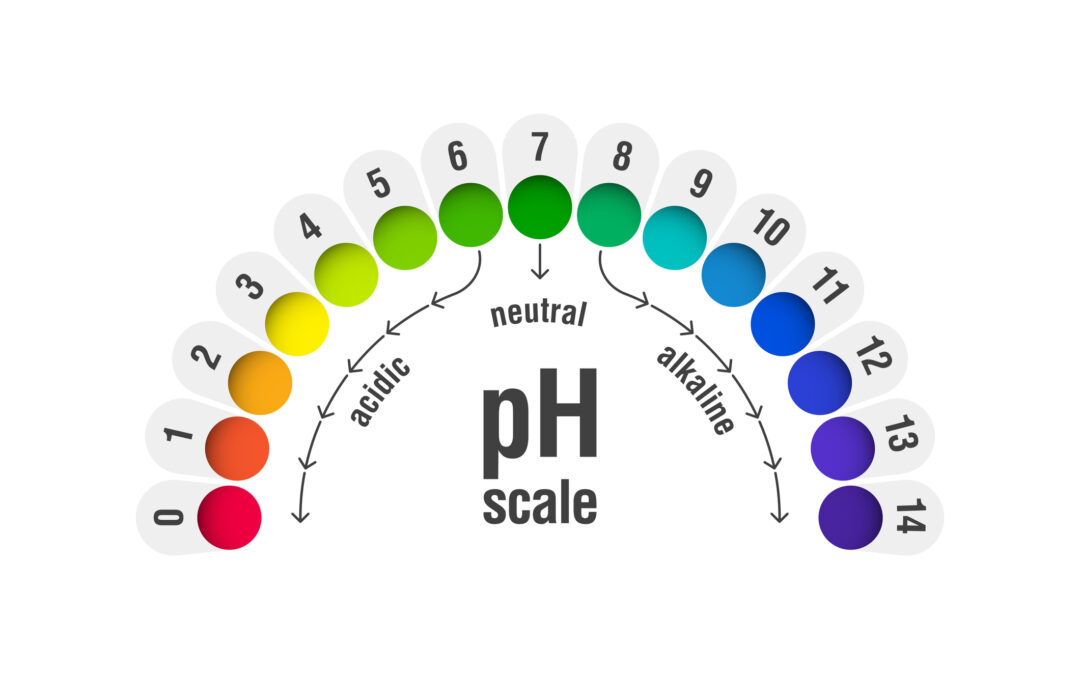Phosphorus removal from wastewater often means chemical precipitation using a very acidic coagulant, traditionally alum or iron-based. Due to the chemistry of these coagulants, the dosage required is often 4 to 10 times that indicated by the stoichiometry alone and goes up dramatically as your limit goes down. This adds a large quantity of acid to your wastewater, acidity that can seriously disrupt your pH balance and negatively impact your biological treatment.
Your “Bugs” Need Stability to Thrive and Treat Your Wastewater.
The optimum pH range for bacterial growth (those bugs that remove your BOD) is between 6.5 and 7.5. While most wastewater has some alkalinity, most cannot handle the high acid influx that comes from the high doses needed to precipitate phosphorus with traditional coagulants.
Nitrifiers are Even More pH-Sensitive.
If you have nitrification requirements this becomes even more critical as nitrifiers consume 7.07 grams of alkalinity as CaCO3 for each gram of ammonia converted to nitrate and nitrite. Nitrification rates are highest at pH values between 7.5 and 8.0, though rates remain acceptable at pHs as low as 7.0 to 7.2. However, nitrification rates decline sharply at pH levels below 6.8, and at pH’s between 5.8 to 6.0, nitrification rates may be only 10 to 20 percent the rate achievable at a pH of 7.0. Maintaining a neutral to slightly basic pH is vital to ammonia removal.
Traditional Coagulants for Phosphorus Removal Add a Lot of Acidity, Disrupting the Delicate pH Balance.
Traditional alum or iron-based coagulants start out highly acidic, with a pH of <2 (ferric sulfate and ferric chloride) to 1.8-2.3 (45% alum). The impact of the high acidity is compounded by the high dosages required to precipitate phosphorus to low levels. To reduce total phosphorus (TP) to 0.1 mg/L in the effluent requires a molar ratio of metal (aluminum or iron) to phosphorus of at least 4 and sometimes as high 10 to 1. To reduce TP below 0.1 mg/L often requires a molar ratio of 20 to 1 or more. That’s a lot of acid!
Hitting the precise ratio needed to meet your phosphorus removal requirements is also difficult because these coagulants react with other components in your wastewater, so their removal of TP is not always predictable.
Neo WaterFX Maintains Your pH Balance While Providing Predictable TP Removal.
With a pH between 3 and 4, Neo WaterFX is 10 to 100 times less acidic than the traditional coagulants. But what makes WaterFX far superior for your pH balance is the chemistry. The lanthanide-based salts are highly selective for reacting with phosphorus. This means you can remove phosphorus to very low levels, less than 0.1 mg/L, with a dosage that is at or close to 1:1 molar ratio of lanthanide to phosphorus. So instead of having to feed at a ratio of 4, or 10 or higher, you are able to meet the most stringent P requirement with a fraction of the coagulant – a fraction of the acidity. Most utilities are able to drastically reduce or even eliminate any pH adjustment once they switch to WaterFX for their phosphorus removal. Reduced or NO caustic feed!
Because WaterFX’s selectivity for phosphorus is so strong, the dosage required to achieve the TP removal required is highly predictable, giving you reliable, consistent compliance.
Maintaining pH Balance Makes Your Entire Treatment Process More Stable and Predictable.
By maintaining the pH balance of your wastewater treatment, WaterFX keeps the pH in the optimal ranges for both the BOD reducing biomass and the nitrifiers, often without adding more alkalinity. This makes your treatment more stable and predictable. The phosphorus removal process becomes “set it and forget it”.
Ready to Be in Balance?
If you are ready for pH-balanced, stable, predictable phosphorus removal, contact us for a free consultation. Our engineers can evaluate your wastewater to determine if WaterFX is right for you. They will also be able to tell you of all the other benefits of switching to WaterFX.



